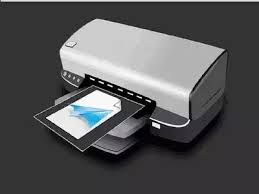When it comes to unraveling the intricate layers of inkjet printers, think of them as the artists of the office, delicately crafting each detail onto a blank canvas.
As you explore the inner workings of these innovative machines, you’ll uncover a world where precision meets efficiency. From understanding the magic behind color mixing to decoding the technology that brings images to life, there’s a whole universe waiting to be discovered within the realm of inkjet printing.
How Inkjet Printers Work
To understand how inkjet printers work, consider the process of creating a printed image on paper. It begins with your computer sending a digital file to the printer. The printer interprets this data and starts the printing process. Inside the printer, a series of tiny nozzles in the print head spray droplets of ink onto the paper. These nozzles are controlled precisely to form the desired text or image. The ink used in inkjet printers is a specially formulated liquid that dries quickly when exposed to air.
As the paper moves through the printer, the print head moves back and forth, depositing the ink in the correct positions. The colors are built up in layers, creating a full-color image or text. Once the printing is complete, the paper may go through a drying process to ensure the ink sets properly. This entire process, from receiving the digital file to producing the final print, is what allows inkjet printers to create high-quality images and documents efficiently.
Types of Inkjet Printing Technologies
Ever wondered about the different types of inkjet printing technologies available in the market today?
Inkjet printers utilize two main technologies: thermal inkjet and piezoelectric inkjet. Thermal inkjet printers work by heating the ink to create a bubble, which forces the ink onto the paper. This method is known for its speed and cost-effectiveness, making it a popular choice for home and office use.
On the other hand, piezoelectric inkjet printers use electric currents to cause the ink to be expelled through tiny nozzles onto the paper. This technology offers precise control over droplet size and placement, resulting in high-quality prints suitable for tasks like photo printing and graphic design.
Both technologies have their strengths and are widely used across various industries. Understanding the differences between these inkjet printing technologies can help you choose the printer that best fits your needs, whether it’s for everyday documents or professional-quality prints.
Advantages of Inkjet Printers
Understanding the advantages of inkjet printers can help you appreciate the benefits they offer in comparison to other printing technologies. One of the key advantages of inkjet printers is their ability to produce high-quality prints with vibrant colors and sharp details. Whether you’re printing photos, documents, or graphics, inkjet printers excel at capturing the nuances of color and delivering crisp images.
Another advantage of inkjet printers is their versatility. These printers can handle a wide range of paper types and sizes, making them suitable for various printing needs. Whether you need to print on glossy paper, cardstock, or envelopes, an inkjet printer can accommodate your requirements with ease.
Inkjet printers are also known for their relatively low upfront costs compared to other printing technologies. Additionally, they’re generally more compact and quieter than laser printers, making them a great choice for home offices or small businesses where space and noise levels are a concern.
Inkjet Vs. Laser Printers Comparison
When comparing inkjet printers to laser printers, it’s important to consider their key differences in printing technology and performance. Inkjet printers are known for producing high-quality images and vibrant colors, making them ideal for printing photos and graphics. They operate by spraying tiny droplets of ink onto the paper, resulting in detailed prints with smooth color gradients.
On the other hand, laser printers use toner powder and heat to fuse the toner onto the paper, making them more suitable for text-heavy documents and high-volume printing.
Inkjet printers are generally more affordable upfront but can be costly to maintain due to frequent ink cartridge replacements. They’re also slower compared to laser printers, making them better suited for home or small office use.
Laser printers, while more expensive initially, have lower operating costs since toner cartridges last longer. They’re faster and more efficient for large print jobs, making them the preferred choice for businesses and offices with high printing demands.
Maintenance Tips for Inkjet Printers
For optimal performance and longevity of your inkjet printer, regular maintenance is essential to prevent issues and ensure consistent print quality. Here are some simple yet effective maintenance tips to keep your printer in top shape.
Firstly, regularly clean the printhead to prevent clogging and ensure clear prints. You can use the printer’s self-cleaning function or clean it manually with distilled water and a lint-free cloth.
Secondly, avoid letting your printer sit idle for extended periods as this can lead to dried-up ink, causing blockages. It’s advisable to print a test page at least once a week to keep the ink flowing smoothly.
Additionally, keep your printer covered when not in use to prevent dust accumulation inside the machine.
Lastly, use high-quality ink cartridges compatible with your printer to maintain print quality and prevent damage. By following these maintenance tips, you can prolong the life of your inkjet printer and enjoy crisp and vibrant prints whenever you need them.
Conclusion
Inkjet printers offer high-quality printing at an affordable price. They’re easy to use and maintain, making them a popular choice for both home and office use.
Understanding how inkjet printers work and the different printing technologies available can help you make the best decision for your printing needs.
Remember to follow maintenance tips to ensure your printer continues to produce crisp, clear prints for years to come.
